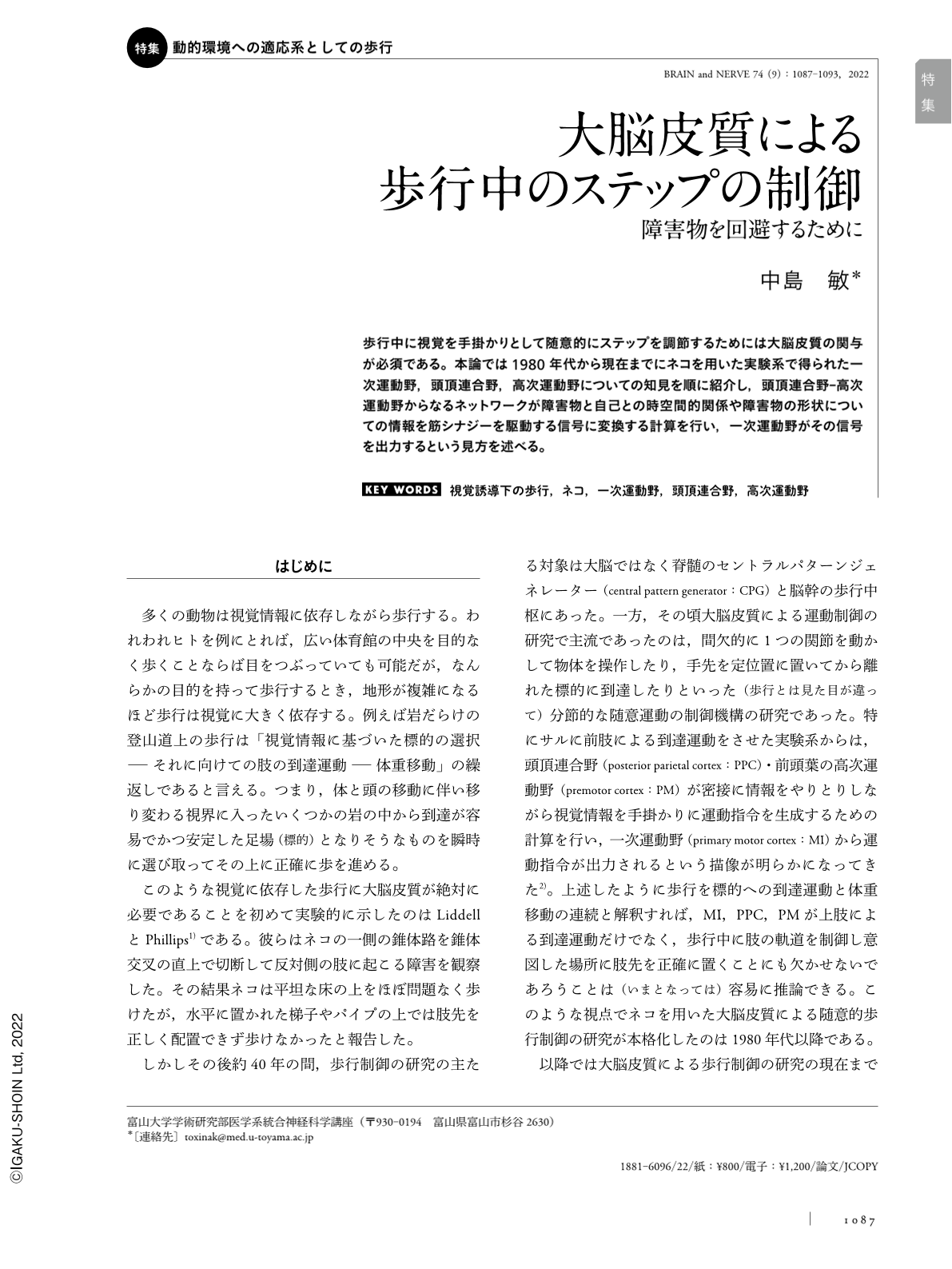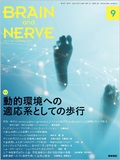Japanese
English
- 有料閲覧
- Abstract 文献概要
- 1ページ目 Look Inside
- 参考文献 Reference
歩行中に視覚を手掛かりとして随意的にステップを調節するためには大脳皮質の関与が必須である。本論では1980年代から現在までにネコを用いた実験系で得られた一次運動野,頭頂連合野,高次運動野についての知見を順に紹介し,頭頂連合野-高次運動野からなるネットワークが障害物と自己との時空間的関係や障害物の形状についての情報を筋シナジーを駆動する信号に変換する計算を行い,一次運動野がその信号を出力するという見方を述べる。
Abstract
Although it has long been known that cortical contribution is undoubtedly necessary for visually guided modification of steps during locomotion, most of the physiological evidence for cortical contribution has been accumulated since the 1980s. This article reviews evidence obtained from experiments on cats that have demonstrated the involvement of the primary motor cortex (MI), posterior parietal cortex (PPC), and premotor areas (PM) in visually guided locomotion. Activity in the MI, which is tightly coupled with muscle activity of the contralateral limbs, has been thought to control muscle synergy of contralateral limbs through spinal interneurons to modify steps. Signals from the PPC are often effector-independent; this area signals spatiotemporal relationships between an obstacle and the body. Activity in the PM is more effector-specific than that in the PPC; the PM seems to receive the spatiotemporal information from the PPC and transform it to effector-specific signals that allow the MI to send commands to modify steps taken by the contralateral limbs. These findings support the view that network activity between the PPC and PM is necessary for controlling not only segmental movements such as reaching with one arm, but also visually guided locomotion.

Copyright © 2022, Igaku-Shoin Ltd. All rights reserved.


